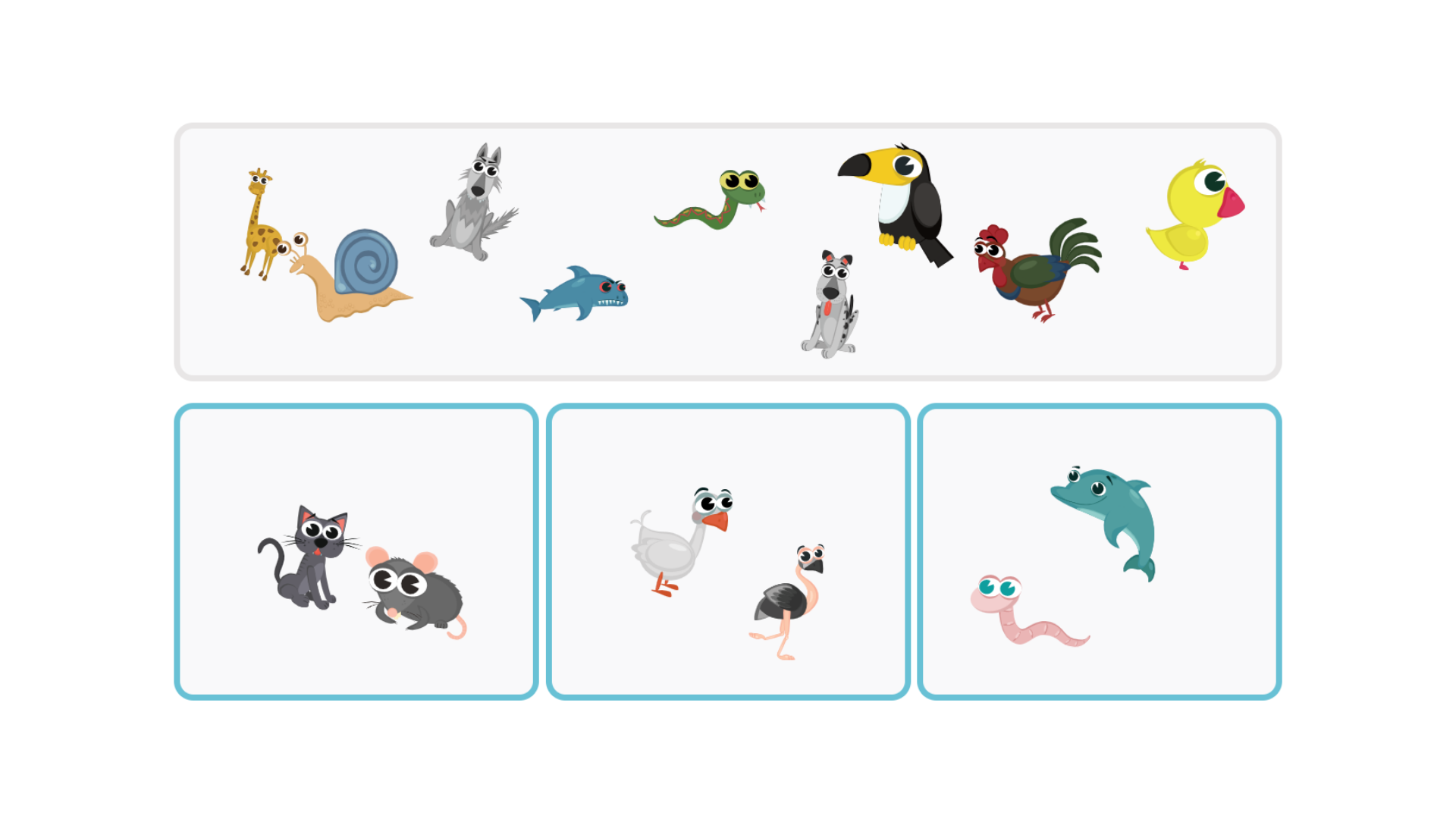Tips on how to use this exercise at home and at school.
Early math concepts
This exercise is a more challenging version of the previous exercise 104. The child knows the selected objects but is figuring out what criteria apply to sort them. Now the shape and colour similarity don't suggest anything, as the objects are connected differently.

Why is this exercise important?
The exercise focuses on promoting sorting according to the given criteria. It is important that the criteria are clearly defined and that the objects can also be explicitly classified. The child learns to think, analyse and structure their thoughts. By sorting, the child also learns conceptual precision, which is important in mathematics.
Who is this exercise suitable for?
Mainly for preschoolers, but it is also suitable for older children who need to develop their language skills.
Methodological recommendations
Either read aloud the instructions to the child, play them from the app or let the child read them by themselves.
The child looks at the objects and explains how to proceed and why. Ask why they think this way and if another object in the picture could also belong to the group and why. In this way the child thinks, learns to argue and develops language skills through their verbal reasoning. In this way, they learn in a much deeper and more complex way.
Tips for similar activities outside the app
When shopping, notice the arrangement of products in shops. Why are they arranged that way? Ask your child questions like "Why are cheese, milk and yoghurt in the same part of the store?" (dairy products), "Why are carrots, lettuce, and cucumbers on the opposite side of the store from apples, pears, and oranges?"(fruits and vegetables), "What do chicken, turkey, and duck have in common?"(poultry)